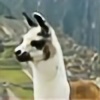HOME | DD
 oxpecker — Thylacine Skull
oxpecker — Thylacine Skull

#anatomy #animals #australian #biology #bones #extinct #graphite #history #illustration #museum #natural #nature #paleo #paleoart #sciart #scientific #skeleton #skull #tasmanian #tassie #thylacine #tiger #wildlife #zoology #paleontology
Published: 2017-10-18 15:27:53 +0000 UTC; Views: 3827; Favourites: 113; Downloads: 0
Redirect to original
Description
Thylacine/Tasmanian tiger skull, illustrated in graphite from a Bone Clones museum quality molded replica. I really enjoyed working on this, though it took a lot longer than anticipated to complete.Related work:
Follow me: Instagram |






 Facebook
Facebook Available to purchase on stickers , clothing & prints .
Related content
Comments: 27

Wait a minute.... that in the top left is top view, right? Why does the cerebral part of the skull look kinda.... twisted to the side a bit?
👍: 0 ⏩: 1

Sharp eyes
That's the sagittal crest. This specimen had an unusually bent crest (this was the true shape of the bone, not a casting error), but it was within the range of natural variation and did not affect the animal's health.
👍: 0 ⏩: 1

I never would have thought that particular part of the skull can be so asymmetrical. It's so strange.... Do they have an explanation to why it was like that?
👍: 0 ⏩: 1

Bone Clones has no record of the specimen's origin, they produced the mould 20 years ago. I'm currently asking around to see if anyone can answer this question as my independent research has yielded no clues. I am keen to understand it myself.
👍: 0 ⏩: 1

Well then I guess I can only wish you good luck in that.
And make sure to let us know if you find the answer (;
👍: 0 ⏩: 2

I finally have something of an answer for you, courtesy of Tammy Gordon, Collection Officer and Registrar of Natural Sciences, Queen Victoria Museum:
I have seen this in a number of carnivore skulls in the museum collection. It is a phenomena broadly known as 'fluctuating' or 'directional' asymmetry. In this case the sagittal crest has deviated significantly from the midline of the cranium.
It is not known for sure what causes this but it is likely that it is related to uneven development of the temporal muscles. These large muscle masses attach to the sagittal crest and are involved in closing the jaw (biting down). The sagittal crest is a feature that develops with age as the animal grows so it is possible that the uneven development of the temporal muscles was present from a young age and paced an uneven loading on the crest as the animal grew.
What caused the uneven muscle development, and how the animal was affected during its life, is difficult to know for certain. Perhaps an injury while it was young. It may have been a captive animal - zoo animals often show skull deformities due to biting on bars, being fed an unnatural diet etc. It would also be interesting to look at the teeth and see if there is any uneven wear or injuries to these.
👍: 0 ⏩: 1

Wow. That sure is an interesting theory. It also would explain why it's like that only in some thylacines, not in all of them. Again, although muscle-induced deformation of bones is nothing new, it's really strange to see it on a skull, and so prominently. But it sure sounds logical.
Thank you for forwarding their answer
👍: 0 ⏩: 1

No worries, I found it really interesting too. Animal asymmetry is a fascinating and mysterious subject.
👍: 0 ⏩: 1

Indeed. As are many things in the animal kingdom
👍: 0 ⏩: 0

Dear goodness: a submission to the Animal Anatomy group that actually has something to do with animal anatomy!
Expertly rendered, too.
👍: 0 ⏩: 1

That group is rather loose with its criteria.
Thank you
👍: 0 ⏩: 1

I feel like I concentrated too much on the group and not the piece itself, in my comment. The quality did catch my eye, even as a thumbnail, as I skimmed down my notifications! It really is impeccable.
👍: 0 ⏩: 1

Thank you very much for your supportive feedback
👍: 0 ⏩: 0

I'm reading the Ancestor's Tale by Richard Dawkins currently. In the chapter on marsupials, he has an entire section dedicated to convergences betweeen marsupials and placentals. In an anecdote, he states that during his time at University, the zoology professors had students sort through collections of dog skulls for their exam, but secretly threw a thylacine skull into the mix to see if anyone would identify it.
👍: 0 ⏩: 1

That is absolutely hilarious!
👍: 0 ⏩: 1

Yes, the similarity is quite amazing.
👍: 0 ⏩: 0

nice choppers, as always and Im a record here - awesome work! <3
👍: 0 ⏩: 1

Aww thank you T 
👍: 0 ⏩: 0

Thank you so much for your lovely comments
👍: 0 ⏩: 1

























